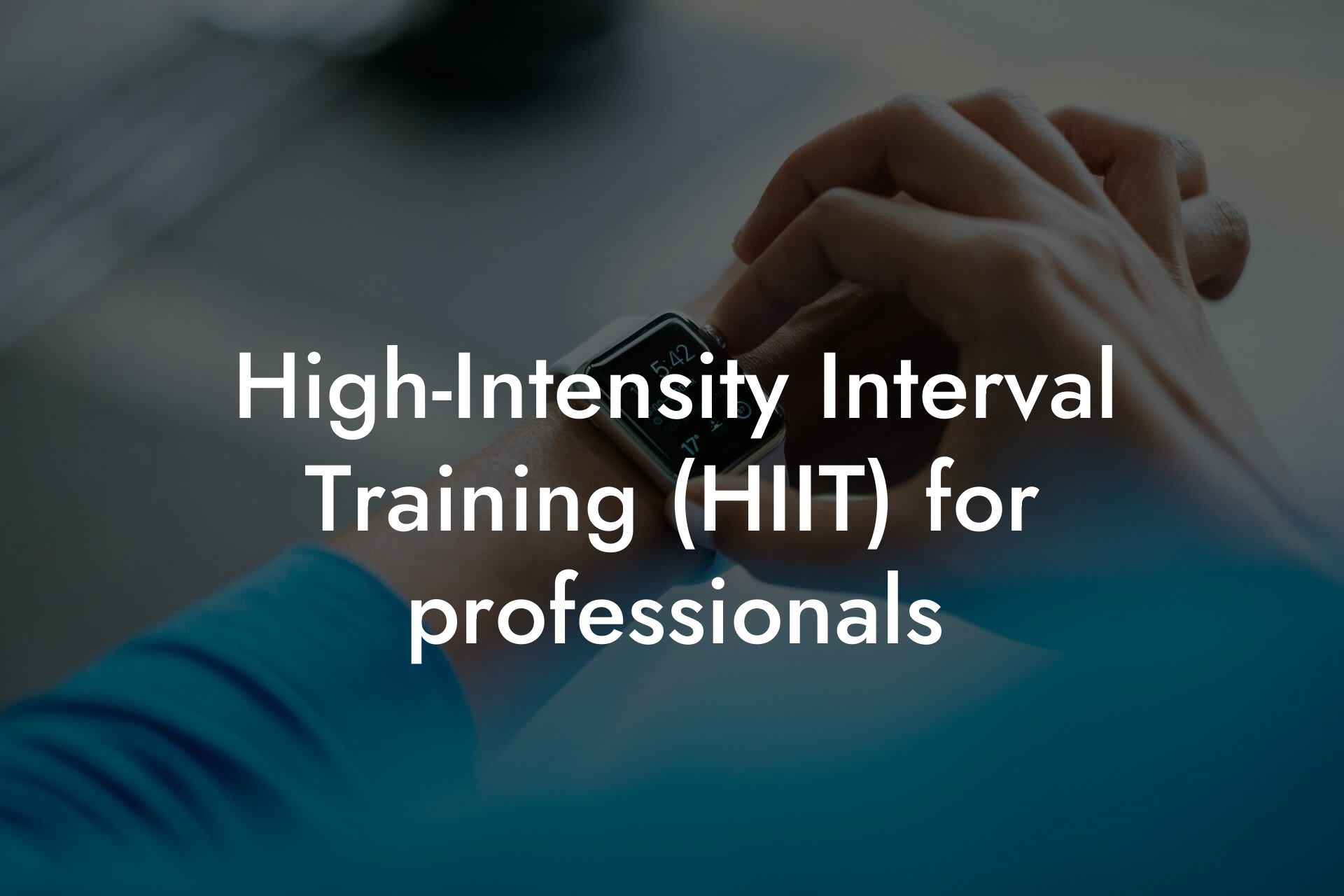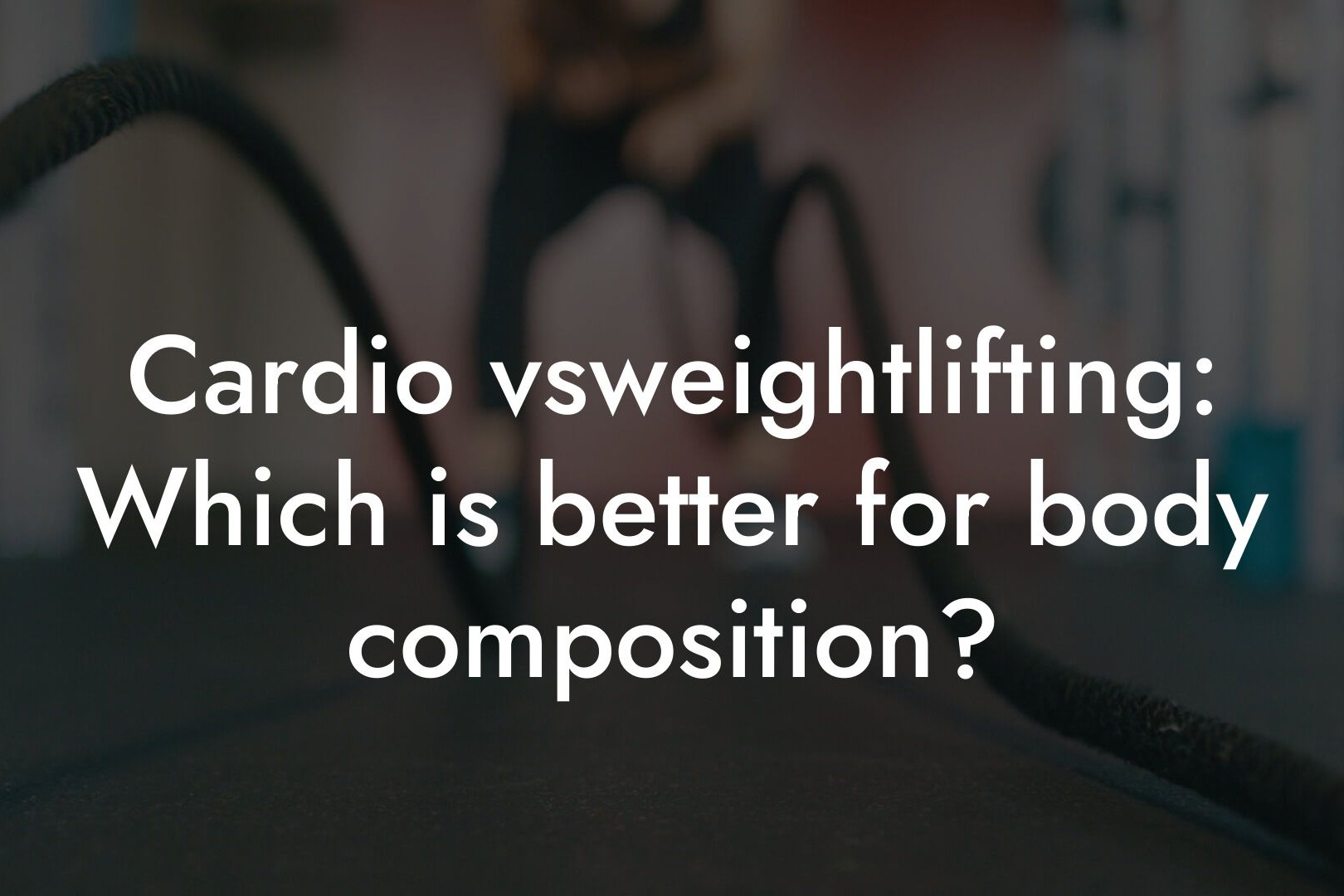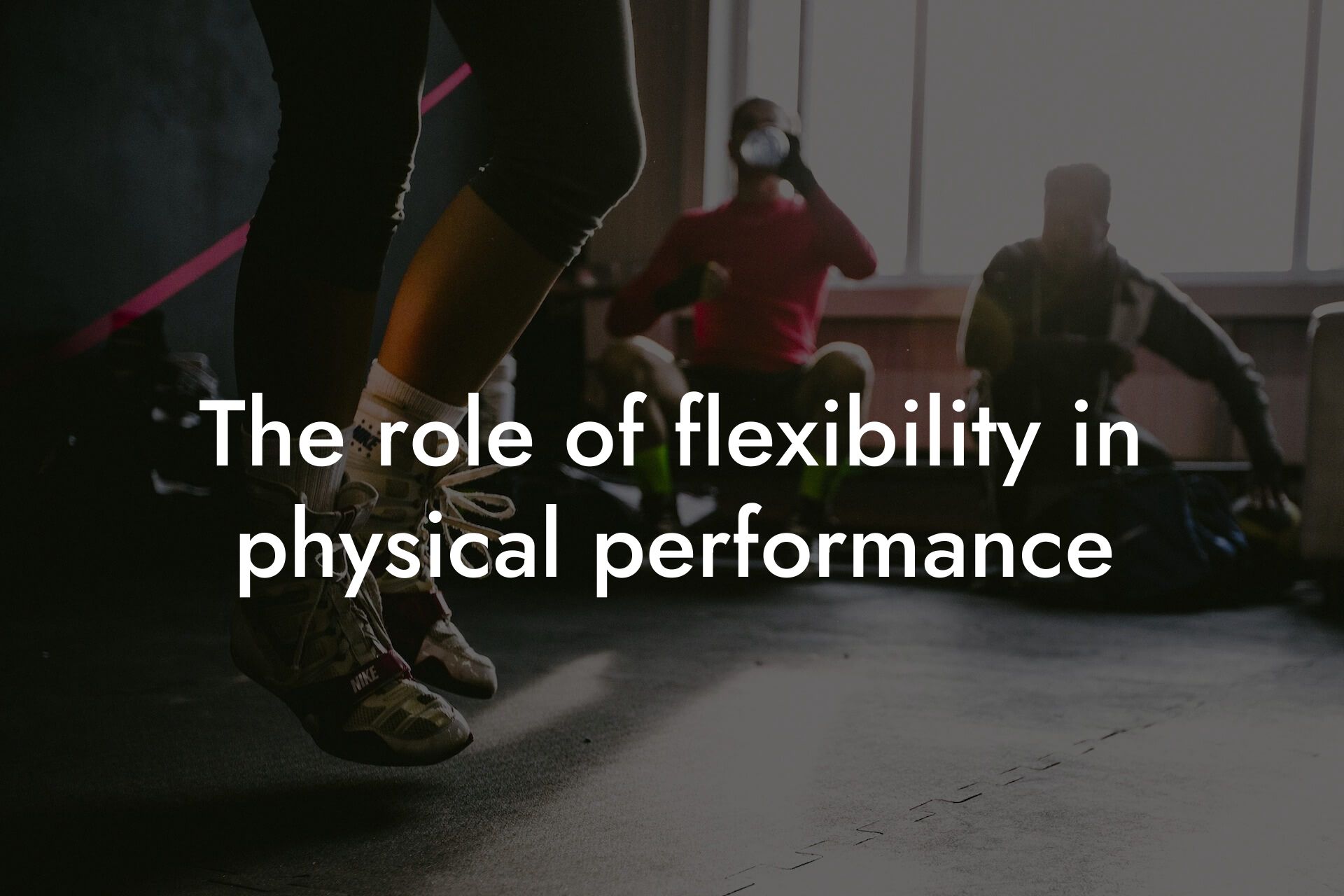As a high-earning professional, you understand the importance of maintaining a healthy and fit physique. However, with a demanding schedule, it can be challenging to find time to exercise. At Tano Performance Group, we believe that fitness should not be compromised, even with a busy lifestyle. In this article, we will provide you with effective workout routines that can be adapted to your busy schedule, helping you achieve your fitness goals and improve your overall well-being.
Table of Contents
Fitness Goals for Busy Professionals
Before we dive into the workout routines, it's essential to understand the fitness goals that are specific to busy professionals. As a high-earning professional, you may have goals such as:
- Maintaining a healthy weight and body fat percentage
- Improving bone density to reduce the risk of osteoporosis
- Enhancing physical appearance and physique
- Increasing energy levels to tackle demanding work schedules
- Reducing stress and improving mental well-being
Understanding Your Body Composition
At Tano Performance Group, we use DEXA (Dual-Energy X-ray Absorptiometry) machine to provide a comprehensive body assessment. This advanced technology measures body fat percentage, bone density, and lean muscle mass, giving you a clear understanding of your body composition. With this information, you can tailor your workout routine to focus on specific areas of improvement.
Time-Efficient Workout Routines
As a busy professional, you don't have hours to spend at the gym. That's why we've developed time-efficient workout routines that can be completed in 30-45 minutes. These routines focus on compound exercises that work multiple muscle groups at once, maximizing your time and effort.
Here's an example of a time-efficient workout routine:
- Warm-up: 5-minute cardio (jogging, jumping jacks, etc.)
- Squats: 3 sets of 10 reps
- Push-ups: 3 sets of 10 reps
- Lunges: 3 sets of 10 reps (per leg)
- Planks: 3 sets of 30-second hold
- Cool-down: 5-minute stretching
High-Intensity Interval Training (HIIT)
HIIT is a highly effective workout routine that involves short bursts of high-intensity exercise followed by brief periods of rest. This type of training is ideal for busy professionals, as it can be completed in a short amount of time and provides excellent cardiovascular benefits.
Here's an example of a HIIT workout routine:
- Warm-up: 5-minute cardio
- Sprints: 30 seconds of all-out effort, followed by 30 seconds of rest
- Repeat for 15-20 minutes
- Cool-down: 5-minute stretching
Bodyweight Exercises
Bodyweight exercises are an excellent option for busy professionals, as they require minimal equipment and can be done anywhere. These exercises focus on functional movements that improve strength, flexibility, and balance.
Here are some examples of bodyweight exercises:
- Pull-ups
- Dips (using a chair or bench)
- Burpees
- Mountain climbers
- Planks
Resistance Band Training
Resistance bands are lightweight, portable, and inexpensive, making them an excellent option for busy professionals. These bands provide a great workout for strength training and can be used to target specific muscle groups.
Here are some examples of resistance band exercises:
- Bicep curls
- Tricep extensions
- Chest presses
- Shoulder rotations
- Leg curls
Scheduling Your Workouts
As a busy professional, it's essential to schedule your workouts in advance. This will help you stay committed to your fitness goals and ensure that you make time for exercise, even with a demanding schedule.
Here are some tips for scheduling your workouts:
- Set a specific time and day for your workouts
- Block out your schedule to avoid conflicts
- Find a workout buddy or accountability partner
- Use a fitness app or planner to track your progress
In conclusion, effective workout routines for busy schedules require a combination of time-efficient exercises, high-intensity interval training, bodyweight exercises, resistance band training, and careful scheduling. By incorporating these elements into your fitness routine, you can achieve your fitness goals and improve your overall well-being, even with a demanding schedule. At Tano Performance Group, we're committed to helping you achieve your fitness goals and providing you with the tools and resources you need to succeed.
Frequently Asked Questions
What is the most effective workout routine for a busy schedule?
As a busy professional, it's essential to prioritize your time and energy. Our recommended workout routine focuses on high-intensity interval training (HIIT) and strength training exercises that can be completed in under 30 minutes. This approach allows you to maximize your results while minimizing your time commitment.
How often should I work out to see results?
Aim to exercise at least 3-4 times a week, with at least one day of rest in between. Consistency is key, but it's also important to allow your body time to recover and rebuild. As you get stronger and more comfortable, you can gradually increase the frequency and intensity of your workouts.
What are the best exercises for weight loss?
When it comes to weight loss, it's all about burning calories and building lean muscle mass. Focus on compound exercises like squats, deadlifts, and bench press, which work multiple muscle groups at once. Additionally, incorporate cardio exercises like burpees, jump squats, and mountain climbers to get your heart rate up and burn those extra calories.
How do I fit exercise into my busy schedule?
Start by scheduling your workouts in your calendar, just as you would any other important appointment. Identify your most energetic times of the day and plan your workouts accordingly. You can also try breaking your workouts into shorter sessions, such as 10-15 minute morning routines or lunch breaks.
What are the benefits of high-intensity interval training (HIIT)?
HIIT is an excellent way to boost your metabolism, increase cardiovascular endurance, and build lean muscle mass. This type of training also improves insulin sensitivity, reduces inflammation, and enhances mental clarity and focus. Plus, it's time-efficient and can be adapted to any fitness level!
Do I need to join a gym to get in shape?
Absolutely not! You can get a great workout at home with minimal equipment, such as dumbbells, resistance bands, or even bodyweight exercises. If you do prefer a gym environment, consider investing in a fitness tracker or workout app that can guide you through exercises and provide accountability.
How do I stay motivated to exercise?
Find an exercise buddy or accountability partner to keep you motivated and engaged. Set specific, measurable goals for yourself, and celebrate your progress along the way. You can also try rewarding yourself after reaching certain milestones, such as a massage or a new workout outfit.
What are the best exercises for building muscle?
Focus on compound exercises that work multiple muscle groups at once, such as squats, deadlifts, bench press, and rows. These exercises recruit more muscle fibers, leading to greater gains in strength and muscle mass. Don't forget to incorporate progressive overload, where you gradually increase the weight or resistance to continue challenging your muscles.
How do I track my progress?
Take progress photos, measurements, and track your workouts to monitor your progress. Use a fitness tracker or app to log your exercises, weight, and body fat percentage. You can also work with a personal trainer or fitness coach to receive customized feedback and guidance.
What are the benefits of strength training for women?
Strength training is essential for women, as it helps build bone density, increases metabolism, and enhances overall physical function. It can also reduce the risk of chronic diseases, such as osteoporosis and heart disease. Plus, it boosts confidence and energy levels, making you feel empowered and strong!
How do I avoid injury when exercising?
Warm up properly before each workout, and cool down afterwards to prevent muscle strains and injuries. Listen to your body and take rest days as needed. Focus on proper form and technique, and avoid pushing yourself too hard, especially if you're just starting out.
What are the best exercises for improving bone density?
Focus on weight-bearing exercises, such as squats, lunges, and deadlifts, which help stimulate bone growth and density. You can also incorporate high-impact exercises like jump squats and box jumps to further challenge your bones. Don't forget to incorporate calcium-rich foods and supplements into your diet to support bone health!
How do I balance exercise with other aspects of my life?
Prioritize your self-care and make time for activities that bring you joy and relaxation. Learn to say "no" to commitments that drain your energy and say "yes" to those that nourish your mind, body, and soul. Remember, exercise is just one aspect of a healthy lifestyle – make sure to balance it with rest, nutrition, and stress management.
What are the benefits of working with a personal trainer?
A personal trainer can provide customized guidance, accountability, and support to help you reach your fitness goals. They can also help you develop a workout routine tailored to your schedule, fitness level, and goals. Plus, they can provide valuable feedback on form and technique to prevent injuries and ensure optimal results.
How do I stay accountable and motivated?
Find an exercise buddy or accountability partner to keep you motivated and engaged. Share your fitness goals and progress on social media to increase accountability and support. You can also work with a personal trainer or fitness coach to receive customized feedback and guidance.
What are the best exercises for improving flexibility and mobility?
Incorporate stretching exercises, such as yoga or Pilates, to improve flexibility and range of motion. You can also try dynamic stretching, such as leg swings and arm circles, to increase mobility and prepare your muscles for exercise. Don't forget to incorporate foam rolling and self-myofascial release to reduce muscle tension and improve recovery!
How do I make exercise a habit?
Start small and set achievable goals for yourself. Begin with short, manageable workouts and gradually increase the duration and intensity as you become more comfortable. Make exercise a non-negotiable part of your daily routine, just like brushing your teeth or taking a shower.
What are the benefits of exercise for mental health?
Exercise is a natural mood-booster and stress-reducer! It releases endorphins, which improve mood and reduce anxiety. Regular exercise can also enhance cognitive function, improve sleep quality, and increase self-esteem. Plus, it provides a healthy distraction from daily worries and concerns.
How do I overcome plateaus and stay motivated?
Change up your workout routine to challenge your muscles and prevent boredom. Set new, challenging goals for yourself, and reward yourself when you reach them. You can also try working with a personal trainer or fitness coach to receive customized feedback and guidance.
What are the best exercises for improving cardiovascular health?
Incorporate cardio exercises, such as running, cycling, or swimming, to improve cardiovascular endurance and reduce the risk of heart disease. You can also try high-intensity interval training (HIIT) to boost your metabolism and burn calories. Don't forget to incorporate strength training exercises to build lean muscle mass and further support cardiovascular health!
How do I make healthy nutrition a part of my lifestyle?
Focus on whole, unprocessed foods, such as fruits, vegetables, lean proteins, and whole grains. Aim to cook at home most nights, and prep healthy meals and snacks in advance. You can also try meal delivery services or work with a registered dietitian to develop a personalized nutrition plan.
What are the benefits of exercise for overall health and wellness?
Regular exercise improves cardiovascular health, increases strength and flexibility, and enhances mental well-being. It also reduces the risk of chronic diseases, such as diabetes and heart disease, and improves overall physical function and quality of life. Exercise is truly a key component of a healthy, balanced lifestyle!
Here are some related articles you might love...
- High-Intensity Interval Training (HIIT) for professionals
- Cardio vs weightlifting: Which is better for body composition?
- The role of flexibility in physical performance
- How to track your fitness progress
- How to avoid injury during workouts
- Strength training for muscle gain and fat loss
- Group fitness vs personal training: What’s right for you?
- Importance of recovery and rest days
- Yoga and its benefits for bone density
Zak Faulkner
Zak Faulkner is a leading authority in the realm of physical health and body composition analysis, with over 15 years of experience helping professionals optimise their fitness and well-being. As one the experts behind Tano Performance Group, Zak has dedicated his career to providing in-depth, science-backed insights that empower clients to elevate their physical performance and overall health.
With extensive knowledge of DEXA technology, Zak specializes in delivering comprehensive body assessments that offer precise data on body fat, muscle mass, bone density, and overall physique. His expertise enables individuals to make informed decisions and achieve their fitness goals with accuracy and confidence. Zak’s approach is rooted in a deep understanding of human physiology, combined with a passion for helping clients unlock their full potential through personalised strategies.
Over the years, Zak has earned a reputation for his commitment to excellence, precision, and client-focused service. His guidance is trusted by top professionals who demand the best when it comes to their health. Whether advising on fitness programs, nutritional strategies, or long-term wellness plans, Zak Faulkner’s insights are a valuable resource for anyone serious about taking their health and fitness to the next level.
At Tano Performance Group, Zak continues to lead our Content Team revolutionising how professionals approach their physical health, offering unparalleled expertise that drives real results.




